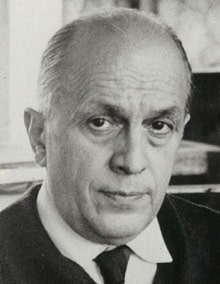F. Bores
His artistic training originated both in the Cecilio Pla painting academy, where he met Pancho Cossío, Manuel Ángeles Ortiz or Joaquín Peinado, and in Madrid’s literary gatherings related to ultraism.
At this time he made engravings and woodcuts for a large number of magazines such as Horizonte, Cruz y Raya, Index, Revista de Occidente.
In 1922 he participated in the National Exhibition of Fine Arts.
In 1925 he participated in the first exhibition of the Iberian Artists Society. The limited success of this exhibition pushes him to go to Paris. In this city he shares a studio with the Spanish painter Pancho Cossío and also meets Picasso and Juan Gris.
In 1927 he held his first solo show in Paris. From this moment on, Bores integrates himself into the Parisian artistic environment where he will live practically his entire life. In 1928 his first exhibition in a gallery in the United States, in 1930 he exhibited again, within a group exhibition at the Museum of Modern Art in New York.
In the following years he continued exhibiting in different galleries in Paris, such as the Georges Petit Gallery, the Bernheim Gallery and the Vavin Raspail Gallery. He also participates in several group exhibitions highlighting the Contemporary Spanish Art Exhibition at the Jeu de Paume Museum in Paris, he also illustrates art books and magazines such as Minotauro.
Contracts with the Zwemmer Galleries in London and Galerie Simon in Paris. Exhibitions in the United States, at the Buchholz Gallery in New York. He spends World War II in Saint Jean de Luz where he resumes friendship with Matisse.
In 1947 the French State acquired, for the first time, a work by Bores, in 1949 it was the Museum of Modern Art in New York that acquired his paintings. He resumes his exhibition activity throughout Europe: France, Germany, Denmark, Italy. He highlights his inclusion in the painters of the Louis Carré Gallery, one of the most prestigious in Paris, and therefore in the world, in those years (1954).
He continues, sporadically, to illustrate books (five linocuts “The Cry for the Death of Ignacio Sánchez Mejias” by Federico García Lorca, lithographs to illustrate the complete works of Albert Camus published by the French Imprimerie nationale in 1962). In 1969 he exhibited at the Theo Gallery in Madrid what his approach to the Spanish public was, which was practically unaware of his work except in professional circles where, on the other hand, it was highly appreciated. In 1971 he exhibited again in this same Theo Gallery, passing away in Paris in 1972.

